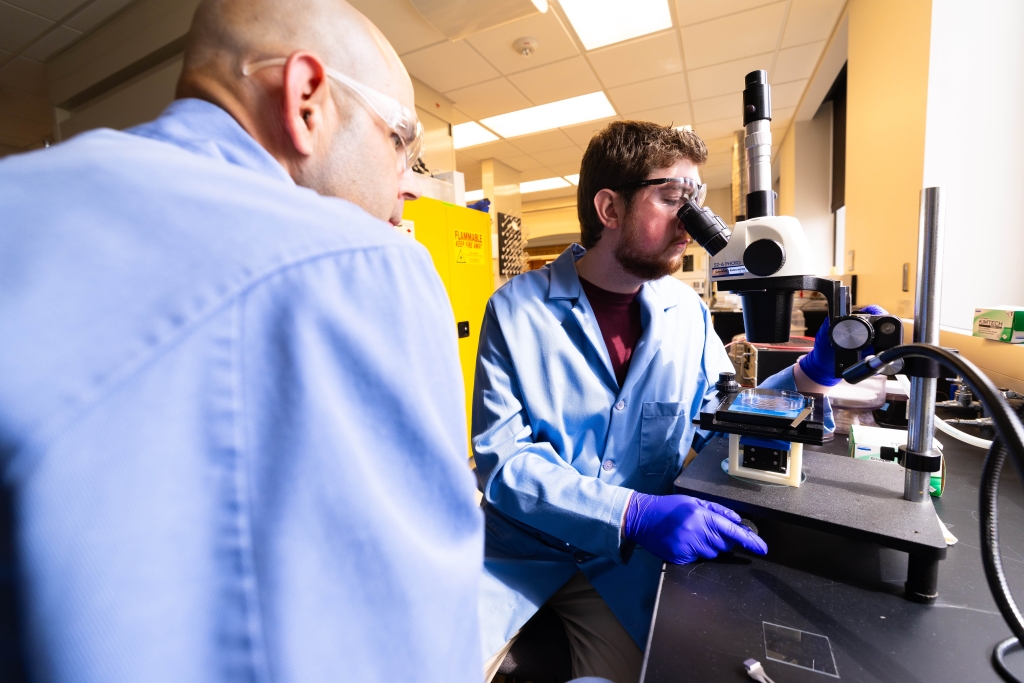Dan Moser, June 17, 2025
Husker researchers developing cephalopod-inspired synthetic skins
Taking a cue from ocean-dwelling species, University of Nebraska–Lincoln researchers are developing synthetic skins that will support the emergence of next-generation “soft” machines, robots and other devices.
The skins closely approximate the mechanical action of the chromatophores found in cephalopods – squids, octopi, cuttlefish and other species. Chromatophores are micrometer to millimeter-scale organs that contain pigment sacs that become more visible as small radial muscles pull on the sac, making the pigment expand under the skin.
“We are working in an emergent area sometimes called autonomous materials,” said Stephen Morin, associate professor of chemistry and author of a new paper in the journal Advanced Materials. “Autonomous materials have the ability to interact, sense and react with their environment in the absence of user input.”
These synthetically developed soft skins mimic the cephalopods’ color switching and led to the fabrication of stretchable arrays of microstructured, stimuli-responsive versions, Morin said. Multiple layers of these synthetic chromatophores could be programmed to respond to specific environmental stimuli, making them well-suited for applications in soft robotics and human-machine interfaces.

These materials could be used as environmental sensors and for information display and signaling, in some cases replacing existing display technologies that are electrically powered and require rigid, inflexible components such as computer screens.
“It unlocks a lot of very interesting opportunities in soft robotics, new types of human machine interfaces,” Morin said.
That could include display and reporting technologies that are inherently stretchable and conformable.
“Imagine what a squid or an octopus can do in terms of creating patterns and doing so very rapidly and dynamically … but in an entirely synthetic structure,” said Morin, a Nebraska Center for Materials and Nanoscience faculty member.
“These types of devices are very versatile,” said Brennan Watts, a fourth-year doctoral student in chemistry working with Morin. “We can finely tune the chemistry of the individual components … and have materials that respond to very specific stimuli.
“You could have a wearable technology that simultaneously reports the temperature, pH, humidity, all sorts of different parameters in a given environment. Doing that with traditional technologies, it would be challenging to measure all of those at the same time.”
The “soft materials” technology will not completely replace current technologies, but their chemical and environmental versatility allows them to operate in different environments, particularly in aqueous settings.
In addition to Morin and Watts, authors of the Advanced Materials article are Matthew R. Jamison, John M. Kapitan, Nengjian Huang and Delroy Taylor, all graduate students in the university’s Department of Chemistry.
This research was sponsored by the Army Research Office and also supported by the Nebraska Center for Integrated Biomolecular Communication.





